Your session is about to expire
Understanding Skin Conditions: Treatment, Types, Causes, And Prevention
Between 1999 and 2019 there has been a growing interest in research on skin conditions and their medical impact¹. The reason for the increase in research stems from two ideas (according to Kasolang et al 2020). The first is because of “more people seeking help from qualified practitioners such as dermatologists, aesthetic physicists, and beauticians to manage their skin disorders”¹. The second is due to “a growing awareness among people to be more beauty conscious in their lifestyles as their economy strengthens”¹.
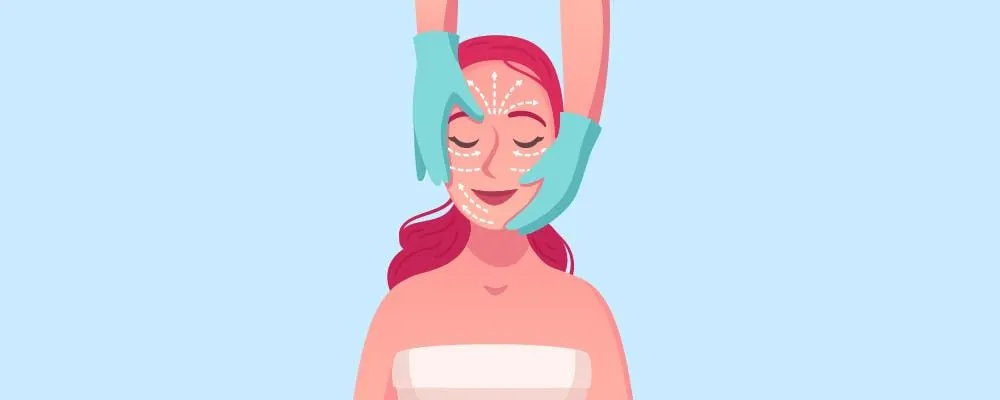
This additional research has allowed doctors to understand how skin disorders can be triggered, prevented, and treated. With 48.98% of men and 51.02% of women² suffering from a form of skin condition, this research can protect millions of people with treatable illnesses.
Different Types Of Skin Conditions
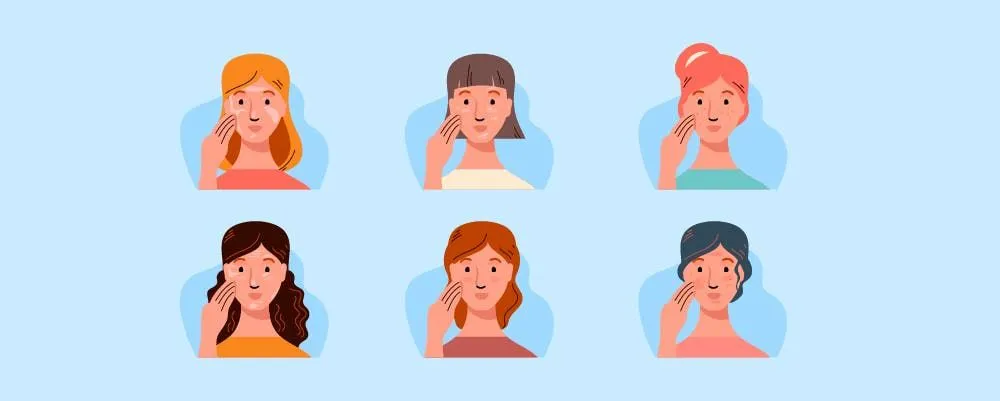
We will be covering some of the most common skin conditions³ affecting people today, and explaining how to identify them.
Acne
When your skin is covered in oils and dead skin cells, your hair follicles become trapped and smothered. This is what causes acne⁴.
When there is too much oil, the moisture traps debris and clogs up the follicles. This can lead to an infection. If an infection occurs, you still see symptoms of acne⁷.
The symptoms of acne include⁴:
- - A closed clogged pore (often called whiteheads, due to their white color).
- - An open clogged pore (often called blackhead, due to its black color).
- - Small and tender bumps, which are red in color (papules).
- - Small and tender bumps, which have white tips (pimples or pustules, the white is pus).
- - Large and solid lumps under the skin, the lumps are painful (nodules).
- - Large and malleable lumps under the skin (cystic lesions, the malleable texture comes from pus under the skin).
Psoriasis
Psoriasis is a long-term skin disease, which currently has no cure⁸. The chronic condition presents itself as an itchy rash. The rash creates scaly patches on the skin and normally occurs on the scalp, elbows, and knees⁸.
The rash often appears in cycles, becoming irritated for a few months or weeks and then disappearing again.
The symptoms of psoriasis include³³:
- - A rash that spreads in patches - it may be similar to dandruff, appear in spots, or cover whole areas of the body.
- - Often red, but can be different colors - white people tend to experience reds, pinks, and silver, while people with darker skin tones experience reds, purples, and grays.
- - Cracking skin that can bleed.
- - A soreness and burning sensation which itches.
- - A cycle of flaring rashes that stick around for weeks or months at a time.
Rosacea
Rosacea is a common skin condition that affects biological, middle-aged, white females more than anyone else²¹,¹⁰. This skin condition causes increased blushing on the face, resulting in swollen skin and puss-filled lumps²¹.
It is very easy to mistake rosacea for acne or natural rouge coloration in the cheeks. However, looking at the symptoms, it is clear that there is a potential for pain and damage with this skin disorder.
The symptoms of rosacea include⁹:
- - Persistent blushing - this symptom can be difficult to spot on darker skin tones.
- - Clear vein lines - also known as “spider veins”, the small blood vessels around your nose and cheeks become inflamed, making them more visible.
- - Swollen lumps which are sometimes filled with pus - this symptom can look similar to acne. If you are confused about which skin condition you may have, compare the rosacea symptom list with the acne list and see which has the most similarities to your condition.
- - Hot and tender skin - if the red area feels like it’s burning, you may have rosacea.
- - Swollen, irritated, and dry eyes.
- - Swollen nose - If left untreated rosacea around the nose can turn into rhinophyma, a condition where the nose swells.
It should be noted that although white females are more likely to develop rosacea, white males are more likely to experience the change into rhinophyma¹¹.
Eczema
Also known as atopic dermatitis, eczema is a well-known skin condition that causes your skin to be itchy and red. Just like hay fever and asthma, eczema is a long-life condition that will affect a person periodically¹².
Although eczema appears to be most common in children, any age can suffer from the itchy condition. Children, however, have less exposure to infections which means their skin is more likely to react negatively to new environments due to a lower immune response¹³.
The symptoms of eczema¹²:
- Itching - the affected area is often itchier at night.
- Reddish, brownish patches around the body - most common on the scalp, face, the bends in knees and elbows, eyelids, upper chest, neck, wrists, ankles, feet, and hands.
- Raised bumps - they are often small and can leak clear fluid when scratched.
- Dry, scaly, cracked skin.
- Swollen, sensitive, and raw skin.
Raynaud’s Phenomenon
Most skin diseases make people’s skin feel hot - Raynaud’s phenomenon has the opposite effect. This disease makes your toes and fingers feel cold and numb. It often flares during cold environmental temperatures or through stress¹⁴.
The most likely people to be affected by Raynaud's are biological females who live in cold climates. Although the sensation and coloration can look very disturbing, the disease will not disable you. However, it can affect your quality of life¹⁴.
The symptoms of Raynaud's phenomenon¹⁴:
- Color loss in the toes or/and fingers.
- Unnaturally cold toes or/and fingers.
- A prickling sensation, numbness, and pain when the condition starts or/and stops.
Vitiligo
Vitiligo is a skin condition that causes discoloration in the skin. Although it is most noticeable in people with darker skin tones, anyone can develop the condition²³. The condition itself doesn’t harm the affected person, nor can it be caught by being near an affected person. The most common negative impact is a lack of self-confidence or a mental health decline due to the unusual color patterns¹⁶.
The symptoms of vitiligo²³:
- Patches of skin with a lack of coloration - it normally starts on the hands, genitals, and face.
- White or gray hair on your eyelashes, eyebrows, beard, or scalp - this normally occurs in large amounts, years before the expected aging process.
- Lack of coloration inside the body - normally the nostril and gum tissue
- Causes Of Different Skin Conditions
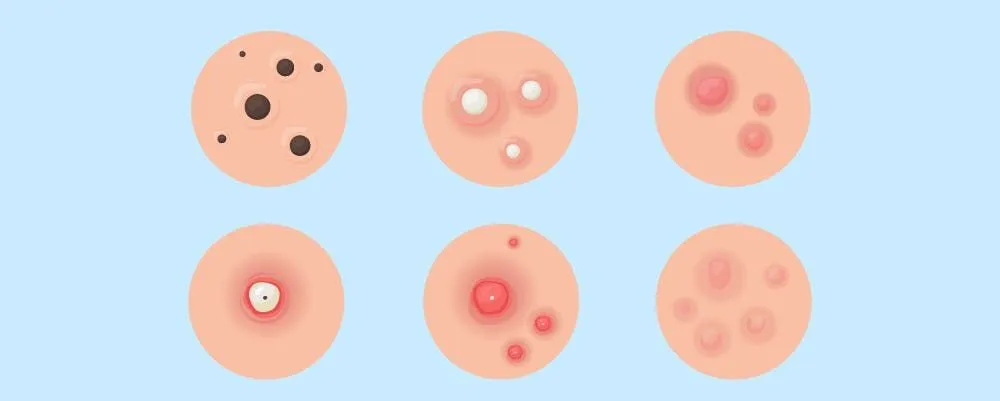
Some skin conditions can be prevented, while others are hereditary. Understanding your skin and how the organ works, can help you prevent or manage these conditions.
Your Skin
If you were to lay your skin out on the floor, it would measure at around 20 square feet. This makes it the largest organ of your body¹⁷.
The skin’s job is to protect the body from bacteria, microbes, and the world at large. For example, the skin can regulate the body’s temperature depending on the temperature around it, it can warn the brain about threats such as too much heat (fire), and it acts as the main defense against debris¹⁷.
The skin itself is composed of 3 layers; the epidermis, dermis, and hypodermis. The epidermis is the outermost layer. It is waterproof and creates your skin tone.
The dermis is right beneath the epidermis. It has a tough connective texture and contains the materials for a secondary layer of defense including sweat glands and hair follicles. The sweat glands produce water to cool the skin and your blood¹⁸, while the hair follicles create sensory feedback to help you recognize textures¹⁹.
The hypodermis is made of fat and connective tissue. Its main job is to store energy and regulate weight around your body²⁰.
Causes Of Acne
Although anyone can develop acne, it mostly occurs in teenagers⁵, because of the increase in hormones such as testosterone, estrogen, and progesterone⁶. These hormones increase during puberty creating more sweat, oil, and stress. In turn, the change creates a knock-on effect on your skin.
However, there is more than one way to develop acne.
The sebaceous glands (which are the tiny glands at the surface of your skin) are attached to hair follicles. These follicles are small holes on your skin that produce a singular hair. The gland’s job is to keep your skin and hair lubricated, thereby avoiding dry skin and protecting your body with a layer of defense. That layer of defense is an oil called sebum⁷.
When there is too much oil, the moisture traps debris and clogs up the follicles. This can lead to an infection. If an infection occurs, you still see symptoms of acne⁷.
Whenever your hormones increase, these glands will produce more oil. Teenagers experience this change in hormone level, as do those just starting their period, those going through pregnancy, and those going through menopause⁷. However, stressful situations can also cause a hormonal imbalance, as can biological factors such as hereditary issues, medication, and smoking⁷.
Causes Of Psoriasis
Psoriasis occurs when the skin cells grow faster than they should. It is a type of immune system response, which forces the skin to repair and create fresh layers faster than normal. This, in turn, creates more dry skin and scaly areas, which you wouldn’t normally notice in a typical turnover process⁸.
The psoriasis condition can be left undetected for years, as it normally needs an environmental trigger to create the immune response. The most likely triggers are⁸:
- Excessive alcoholic drinking.
- Cold and dry weather.
- A skin infection.
- Smoking or inhaling secondhand smoke.
- An injury to the skin - simple cuts could trigger the response, as can sunburn.
Other causes can be due to taking or withdrawing from medications. Blood pressure drugs, lithium, and antimalarial drugs are known to trigger psoriasis. Whereas, withdrawal from corticosteroids can also cause the skin condition⁸.
Causes Of Rosacea
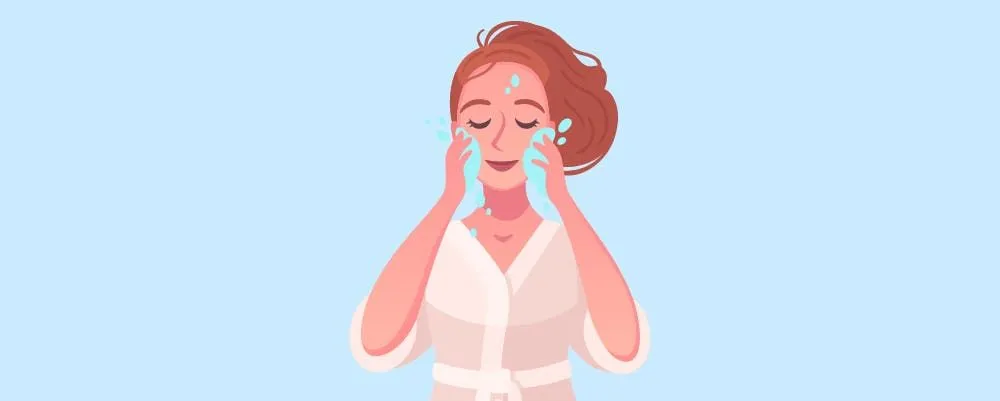
Rosacea is considered to be another overactive immune response. Despite common assumptions, it is not caused by poor hygiene, instead, it is a hereditary condition that can be triggered by environmental factors⁹.
Common triggers of Rosacea are²¹,⁹:
- - Drinking any amount of alcohol.
- - Eating spicy foods.
- - Eating dairy products.
- - Drinking caffeinated beverages.
- - Drinking hot drinks.
- - Participating in aerobic activities, such as running, cycling, and swimming.
- - Using some skin or hair products - if you notice a flare-up, it may be worth noting the ingredients in the products and avoiding them in your search for a non-reactive product.
- - Extreme temperatures.
- - Extreme emotional responses.
Causes Of Eczema
Eczema is another skin condition that is caused or created by genetics. Healthy skin will help your body retain moisture which is used to protect your skin from irritants such as allergens or bacteria. People with eczema find it hard to retain moisture, which means interacting with a trigger could produce itchy symptoms as your skin fails to protect you from the irritants²².
Although eczema can be triggered early on in a person’s life due to a low immune system¹³, it’s the irritant that causes eczema to develop. Common irritants and triggers include²²:
- - Cleaning products - soaps, shampoo, and washing up liquid are common triggers for eczema. Patients often have to follow a “trial and error” process to find a cleaning product that doesn’t irritate their skin.
- - Cold and dry weather.
- - Allergies - common allergies which trigger eczema are hay fever, fur, mold, dairy, and wheat.
- - Synthetic fabrics and wool.
- - Hormonal changes - flare-ups can be more significant during pregnancy, puberty, menopause, and before a period.
- - Skin infections.
Causes Of Raynaud’s Phenomenon
There hasn’t been enough research to confirm the cause of Raynaud’s phenomenon. However, enough evidence suggests that the reaction is connected to blood vessels spasming ¹⁵.
When stressed or in a cold environment, the arteries in your toes and fingers begin to narrow. This is to suppress the amount of blood going to your extremities, keeping your core organs safe and at the correct temperature. However, when this process happens too much, the reduced size of your arteries begins to thicken. This limits the blood flow even further¹⁴.
This means the main trigger of Raynaud’s disease is cold temperatures and stress. That being said, there are two different types of this condition, the second of which can be triggered by multiple factors¹⁴.
Raynaud’s disease is also known as primary Raynaud’s. It is the most common type, is often mild, and doesn’t require treatment¹⁴.
Raynaud’s phenomenon is also known as secondary Raynaud’s. This version is normally caused by another issue and can be more serious. It is most common in people over 40 years old¹⁴.
Secondary Raynauds can be caused by¹⁵:
- - Injuries to the hands or feet.
- - Repetitive actions - when you complete the same actions over and over again, the vibrations and movements can create injuries. These actions could be typing, using jackhammers, or even playing the piano.
- - Smoking - Smoking is known to constrict blood vessels.
- - Artery diseases.
- - Connective tissue diseases.
- - Carpal Tunnel Syndrome - CTS is a condition where a major nerve in your hand has too much pressure on it, making it numb and in pain.
Causes Of Vitiligo
Melanin is produced by melanocytes in your skin cells. It is the product that creates your skin color. People with Vitiligo aren’t able to produce enough melanin across their whole body, which is why white patches appear. As we said before, this can happen to any skin color, including white people, but it is more obvious in people with darker skin tones²³.
The white patches can be on your skin or your hair, and they often grow as you age. There are two types of vitiligo and each is triggered by separate factors²³.
The first type of vitiligo is non-segmental. Non-segmental is the most common type of vitiligo affecting 9 in 10 people with the condition. The term describes a symmetrical pattern in the white patches and is thought to be an autoimmune condition²³.
If you have non-segmental vitiligo, your immune system doesn’t work as it should. Instead of fighting foreign cells (like viruses and bacteria), it is attacking your own cells and is destroying the melanin in your skin. Non-segmental vitiligo is a genetic condition²³.
The second type of vitiligo is segmental. It is caused by chemicals damaging your skin’s nerve endings. Three main reactions cause segmental vitiligo, they are²³:
- - Exposure to a harmful chemical - either on the skin itself, or simply being near it.
- - Skin damage - This could happen when cuts don’t heal correctly, or through severe sunburn.
- - Extremely stressful events - in the emotional moment, stress hormones change the biochemistry of your body creating a chemical change. It is the most common in children who were just born.
Treatment For Skin Conditions
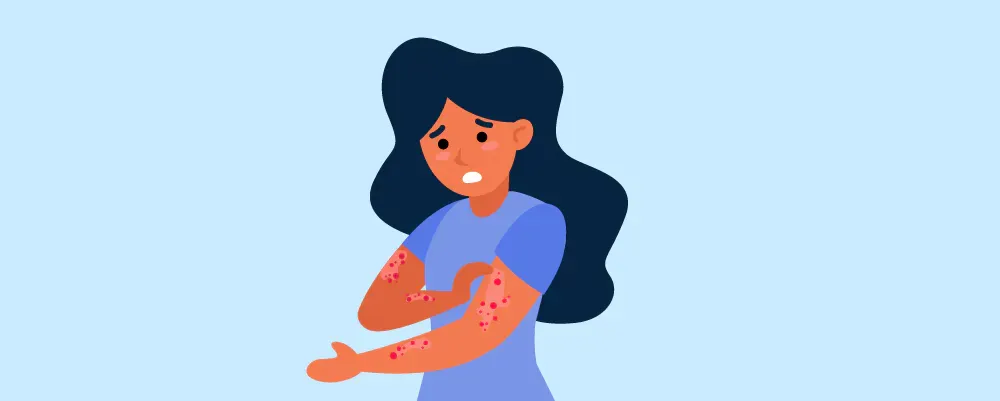
Because most of these conditions are created through a genetic disposition, most don’t have a cure. However, there are still ways to treat the symptoms when you experience a flare-up.
Treatment For Acne
Normally acne doesn’t need treatment, however, in severe cases medication may be needed.
Your doctor may offer you prescription medication which could include²⁴:
- - Topical retinoids - this medication is a type of gel or location. It exfoliates your skin, removing dead skin cells to help prevent a build-up. It normally requires a 6-week course to complete.
- - Topical antibiotics - this gel or cream kills bacteria on the skin which may have been infecting your pores. You will likely be offered a 6 to 8-week course. Any longer than that, and the bacteria may become resistant to the cream, causing more infections and worsening your acne.
- - Azelaic acid - this cream is often used if the topical options aren’t helping. It can remove dead skin and kill bacteria.
- - Antibiotic tablets - these tablets are normally offered to people with severe acne. The course often lasts for 4 to 6 months, and you may become sensitive to sunlight in the process.
- - Hormonal therapies - most doctors will prescribe contraceptive pills to female patients, as the hormonal balance in the medication can reduce acne. However, co-cyprindiol (another hormonal treatment) can also be offered.
Treatment For Psoriasis

Treatment for Psoriasis often falls into 3 categories - creams (also known as topicals), ultraviolet light exposure (also known as phototherapy), and tablets or injections (also known as systemic)²⁵.
Your doctor could offer you many different types of creams. The most common are²⁵:
- - Vitamin D analog creams - sometimes used with steroid creams, this topical slows the production of skin cells and creates an anti-inflammatory effect. This reduces the swelling and should stop psoriasis from developing.
- - Steroid creams - these creams are often used on mild to moderate psoriasis conditions. It reduces itchiness and slows the production of skill cells.
- - Emollients - this moisturizing cream helps prevent water loss and creates a protective film over your skin.
Phototherapy is used on patients who don’t respond well to creams. The artificial light slows down the production of skin cells ²⁵.
In severe cases, tablets or injections may be offered by your doctor, however, they can have some serious side effects. Talk to a doctor before accepting any systemic treatment²⁵.
Treatment For Rosacea
There are two main methods to treat Rosacea - medication, and laser therapy²⁶.
The medications available range from topical drugs, such as brimonidine cream and oxymetazoline cream, antibiotics, and acne drugs²⁶.
The creams reduce your blood flow by constricting the vessels in the skin. This, in turn, reduces the blushing effect. The antibiotics reduce infections causing lumps and pus. The acne drugs are a more powerful version of antibiotics. They target the lesions which act similarly to acne²⁶.
Laser therapy is the most effective on light skin tones. It targets the enlarged blood vessels and constricts them. However, you may experience swelling or bruising in the days that follow. Although darker skin tones can try laser therapy, it can cause permanent discoloration such as vitiligo²⁶.
Treatment For Eczema
Eczema treatment often comes in the form of medications and therapies ²⁷.
The medication options include²⁷:
- - Corticosteroid cream - it moisturizes your skin.
- - Tacrolimus or Pimecrolimus cream - it controls your immune system and moisturizes your skin.
- - Antibiotic cream - it fights off bacterial infections that may be surrounding a crack or pore in your skin.
- - Corticosteroid pill - a strong anti-inflammatory drug.
- - Dupilumab injection - a last resort for people who don’t respond well to the other options.
The therapy options include²⁷:
- - Wet dressings - this intense treatment starts by wrapping the area in question with a corticosteroid cream and a wet bandage. It is often used on those hospitalized due to their condition.
- - Light therapy - this method is often suggested to those who either flare up as soon as they stop their medication treatment, or simply don’t respond to medication treatments.
- - Counseling - if you find that stress and anxiety worsen your eczema, then counseling may be the treatment you need. 47.52% of patients recognize that stress influences the severity of their disease²⁸.
Treatment For Raynaud’s Phenomenon
If you have a mild form of Raynaud’s, then dressing for the cold regardless of the weather can help you cope with the symptoms. For example, wearing heavy socks or gloves²⁹.
This should help reduce the number of attacks you experience and prevent tissue damage. However, if these simple tricks aren’t helping, you can take medication or receive surgery²⁹.
The medication you can try are²⁹:
- - Vasodilators - this is a type of drug which relaxes your blood vessels.
- - Calcium channel blockers - this is a type of drug which opens and relaxes the small blood vessels in your feet and hands.
If your Raynaud’s is severe, you may need surgery or stronger medical producers. Your doctor may offer these options²⁹:
- - Chemical injections - onabotulinumtoxinA (also known as botox) block your nerves reducing your pain.
- - Nerve surgery - in this surgery small incisions are made along your hands and feet to interrupt your blood vessels exaggerated responses.
Treatment For Vitiligo
Unfortunately, no drug currently available can stop the process of vitiligo. However, some drugs and therapy treatments can restore the lost color. These are³⁰:
- - Corticosteroids - anti-inflammatory creams or pills which can restore color in the early stages of vitiligo.
- - Tacrolimus and Pimecrolimus - creams that can be used on the face and neck. They can bring back small areas of pigmentation.
- - Light therapy - this treatment lasts 1 to 3 months and is a dramatic treatment to slow down the progression of vitiligo.
- - Depigmentation - when the discoloration has become widespread, depigmentation therapy removes what is left of your original skin tone, creating an even light color.
Prevention
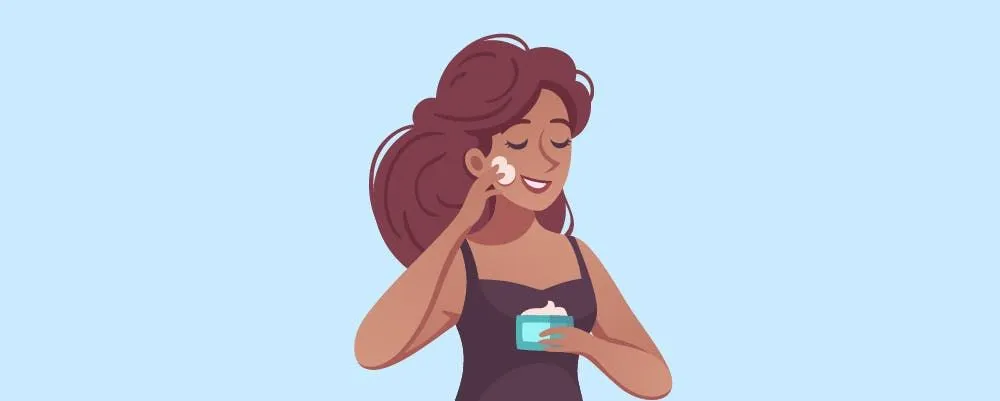
There are a lot of myths about skin diseases that suggest a cleaner or healthier lifestyle can stop acne and lumps from appearing. These are not true⁴. Eating greasy foods doesn’t affect the condition of your skin, and conditions such as acne aren’t caused by dirty skin. In fact, over scrubbing or using harsh chemicals can irritate your skin more, making your skin condition worse⁴.
That being said, there are ways to prevent your skin condition from having harsh attacks.
Acne Prevention
To prevent your acne from worsening, you should wash the affected area with a gentle cleanser twice a day. Ensure that whatever cosmetic products you use are labeled as either water-based or non-comedogenic, to prevent them from irritating your skin³¹.
Although, you may want to get rid of the acne as soon as possible, picking, squeezing, or touching the area can cause more acne to appear. It can also lead to infections or scarring. For this reason, you should avoid touching the area. The same situation can occur when wearing tight clothing. Wear loose or no fabrics around the affected area³¹.
Lastly, you should shower after exercising, to prevent additional sweat and oil from clogging your pores³¹.
Psoriasis Prevention
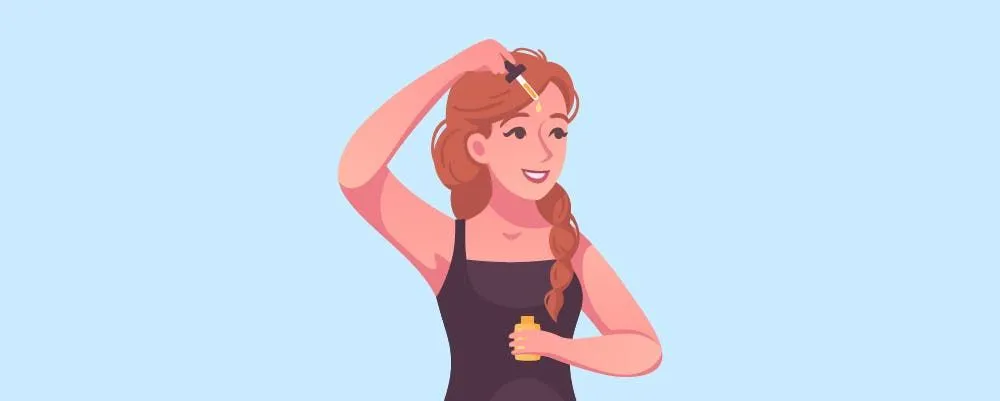
The best way to prevent your psoriasis from worsening is to avoid scratching it, keep your body temperature cool, avoid direct sunlight, and keep your skin moist³².
Taking lukewarm baths with mild soaps every day can help lock the moisture in, while applying moisturizer after the bath can keep that moisture in your skin for longer³².
Rosacea Prevention
The most effective way to prevent a rosacea outbreak is to avoid anything that triggers the skin condition. This means, avoiding touching your face as much as you can, and using a nonsoap cleanser twice a day to moisturize and clean your skin without irritating it²⁶.
The products you use should be fragrance-free, alcohol-free, and menthol-free²⁶.
Lastly, you should apply sunscreen whenever you leave the house. The cream should be SPF 30 or higher. If you have topical medication, the order of application should be topical medication, sunscreen, and then any cosmetics²⁶.
Eczema Prevention
To prevent your eczema from worsening, there are several at-home techniques to try. First, consider moisturizing your skin at least twice a day. The type of moisturizer you use should be based on your own experience of how they react to your skin²⁷.
You should be taking warm baths, and allow your body to soak for 10 to 15 minutes. Add baking soda to the bath to gently clean your skin. When you leave the bath, apply your moisturizer while your skin is damp²⁷.
If you live in a hot and dry area, then use a humidifier to help keep your skin moist²⁷.
Lastly, wear breathable clothing with smooth textures. This will stop the material from scratching or irritating your skin²⁷.
Raynaud’s Phenomenon Prevention
There are four main triggers to consider with Raynaud’s. When avoiding them, you will be less likely to endure an attack, or your attacks will be less severe²⁹.
First, you should avoid smoke, both direct and second hand. Next, you should avoid environments that dramatically change temperature (for example, walking from a hot sunny outdoor location into an air-conditioned room)²⁹.
Next, you should exercise often, however, be wary of exercising in the cold due to your body changing in temperature from the activity. Lastly, you should learn to recognize when you are feeling stressed, and how to control it²⁹.
Vitiligo Prevention
The best way to prevent your vitiligo from spreading is to avoid direct or artificial UV light. This means wearing water-resistant sunscreen and avoiding sunbeds completely. The sunscreen should have an SPF rating of 30 or higher and applied every 2 hours. If you are swimming or sweating, it should be applied more often³⁰.
Other than protecting your skin against the sun, you should be avoiding any additional damage to your skin, for example, tattoos. If more damage occurs, a new patch of vitiligo will likely appear³⁰.
Summary

If you are in pain or discomfort due to your skin condition, you should contact your doctor to find a medication that will soothe your skin. Remember that skin conditions are mostly hereditary, and shouldn’t be considered a response to poor hygiene.
Most of the time, keeping your skin moist, avoiding the sunlight, and wearing loose clothing can prevent your skin from flaring up.
Discuss with your doctor what the best course of action is for you, and if you need any treatments to tackle your skin condition.
References
1. Kasolang et al, Common Skin Disorders: A Review
3. Skin Conditions at a Glance
5. B. Dreno, C. Bordet, S Seite, C. Taieb, Acne Relapses: Impact On Quality Of Life And Productivity
6. Megha Kataria Arora, Amita Yadav, Vandana Saini, Role Of Hormones In Acne Vulgaris
11. T. Jansen, G Plewig, Rosacea: Classification and Treatment
16. D Parsad, S Dogra, A J Kanwar, Quality Of Life In Patients With Vitiligo
18. B D Hodge, T Sanvictores, R T Brodell, Anatomy, Skin Sweat Glands
19. C H Gibbons, T Freeman, Aging and Anti-Aging in Hair and Hair Loss
20. W James, Skin : Basic Structure and Function
26. Rosacea Diagnosis & Treatment
27. Atopic Dermatitis (Eczema) Diagnosis and Treatment
29. Raynaud’s Disease Diagnosis & Treatment
30. Vitiligo Diagnosis & Treatment
31. Acne Diagnosis & Treatment